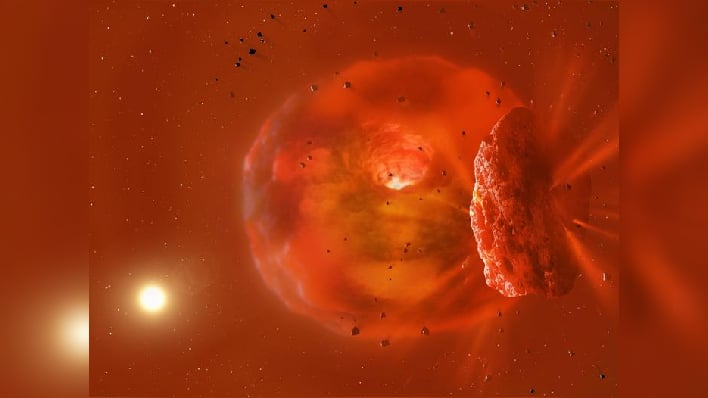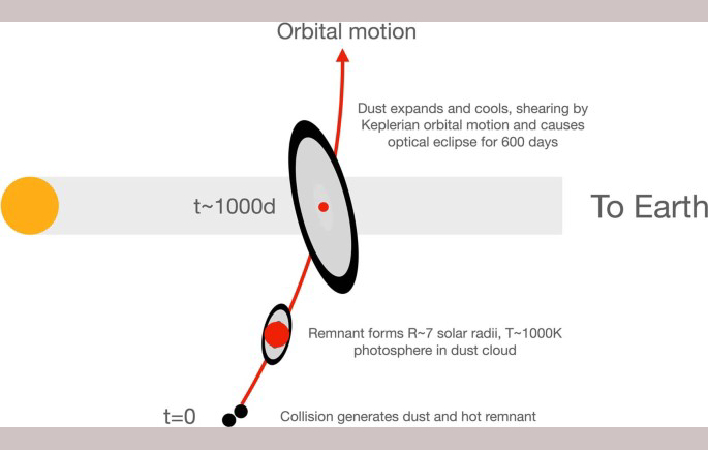Astronomers Capture Astonishing Afterglow Of Two Giant Planets Colliding In Deep Space

An international team of astronomers came together after an enthusiast viewed the light curve of the star and noticed that something was off. The enthusiast found that the system had doubled in brightness at infrared wavelengths about three years before the star started to fade in visible light.
"To be honest, this observation was a complete surprise to me," noted co-lead author Dr. Matthew Kenworthy from Leiden University. He continued, "When we originally shared the visible light curve of this star with other astronomers, we started watching it with a network of other telescopes."

The group of international astronomers continued to watch the star with great interest, including monitoring changes in the star's brightness over a two-year period. During that time, the star was named ASASSN-21qj.
The researchers concluded that the most likely explanation for the phenomenon was two ice giant exoplanets colliding. As they collided, they produced the infrared glow detected by NASA's NEOWISE mission, which utilizes space telescopes to seek out asteroids and comets.
"Our calculations and computer models indicate the temperature and size of the glowing material, as well as the amount of time the glow has lasted, is consistent with the collision of two ice giant exoplanets," explained co-lead author Dr. Simon Lock.
The astronomers plan on closely watching what happens next in this system. A tell-tale scattering of light from the cloud of dust could be detected with ground-based telescopes and NASA's James Webb Space Telescope.
Top Image Credit: Mark Garlick

